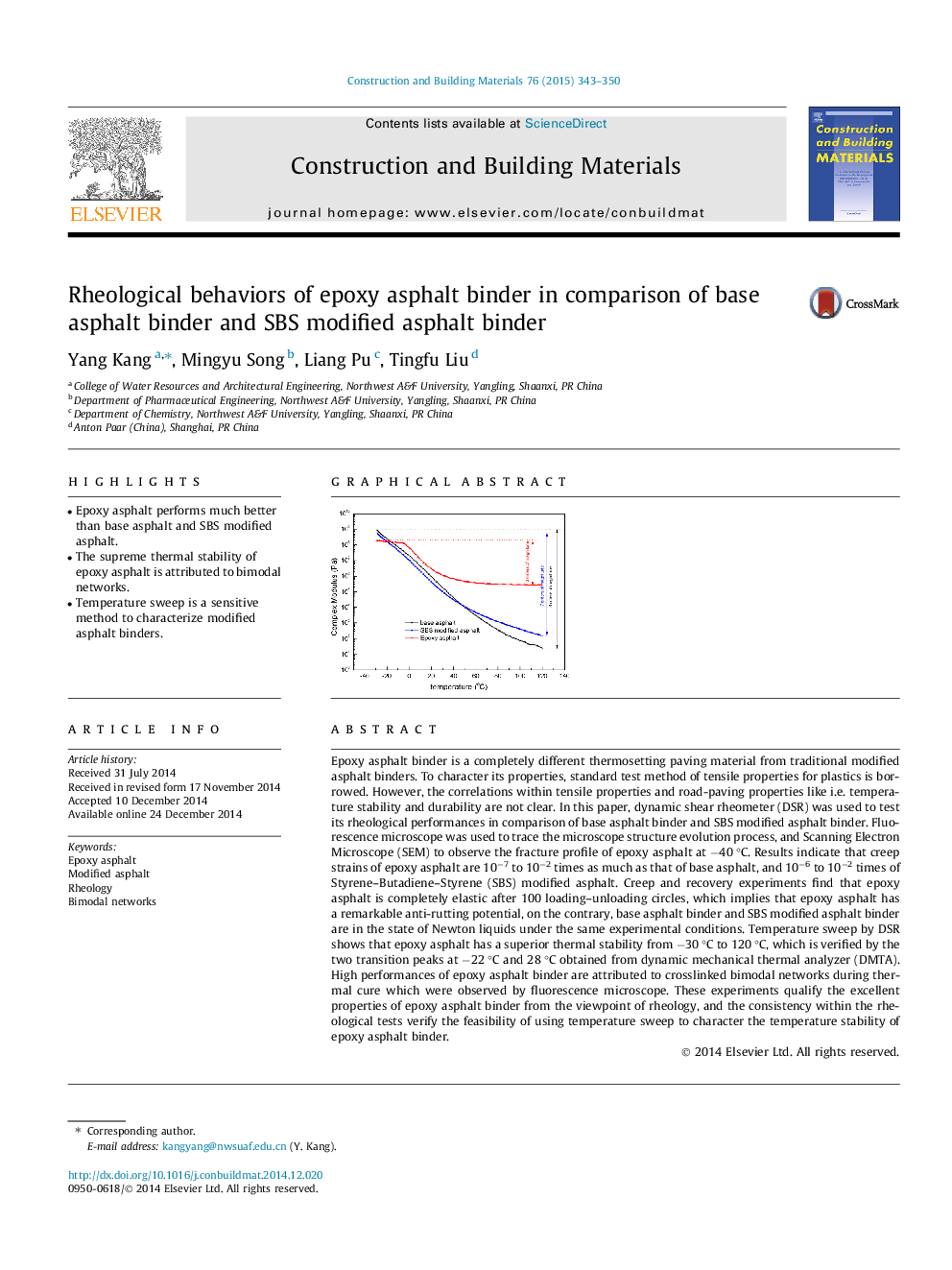| کد مقاله | کد نشریه | سال انتشار | مقاله انگلیسی | نسخه تمام متن |
|---|---|---|---|---|
| 257249 | 503580 | 2015 | 8 صفحه PDF | دانلود رایگان |

• Epoxy asphalt performs much better than base asphalt and SBS modified asphalt.
• The supreme thermal stability of epoxy asphalt is attributed to bimodal networks.
• Temperature sweep is a sensitive method to characterize modified asphalt binders.
Epoxy asphalt binder is a completely different thermosetting paving material from traditional modified asphalt binders. To character its properties, standard test method of tensile properties for plastics is borrowed. However, the correlations within tensile properties and road-paving properties like i.e. temperature stability and durability are not clear. In this paper, dynamic shear rheometer (DSR) was used to test its rheological performances in comparison of base asphalt binder and SBS modified asphalt binder. Fluorescence microscope was used to trace the microscope structure evolution process, and Scanning Electron Microscope (SEM) to observe the fracture profile of epoxy asphalt at −40 °C. Results indicate that creep strains of epoxy asphalt are 10−7 to 10−2 times as much as that of base asphalt, and 10−6 to 10−2 times of Styrene–Butadiene–Styrene (SBS) modified asphalt. Creep and recovery experiments find that epoxy asphalt is completely elastic after 100 loading–unloading circles, which implies that epoxy asphalt has a remarkable anti-rutting potential, on the contrary, base asphalt binder and SBS modified asphalt binder are in the state of Newton liquids under the same experimental conditions. Temperature sweep by DSR shows that epoxy asphalt has a superior thermal stability from −30 °C to 120 °C, which is verified by the two transition peaks at −22 °C and 28 °C obtained from dynamic mechanical thermal analyzer (DMTA). High performances of epoxy asphalt binder are attributed to crosslinked bimodal networks during thermal cure which were observed by fluorescence microscope. These experiments qualify the excellent properties of epoxy asphalt binder from the viewpoint of rheology, and the consistency within the rheological tests verify the feasibility of using temperature sweep to character the temperature stability of epoxy asphalt binder.
Figure optionsDownload as PowerPoint slide
Journal: Construction and Building Materials - Volume 76, 1 February 2015, Pages 343–350